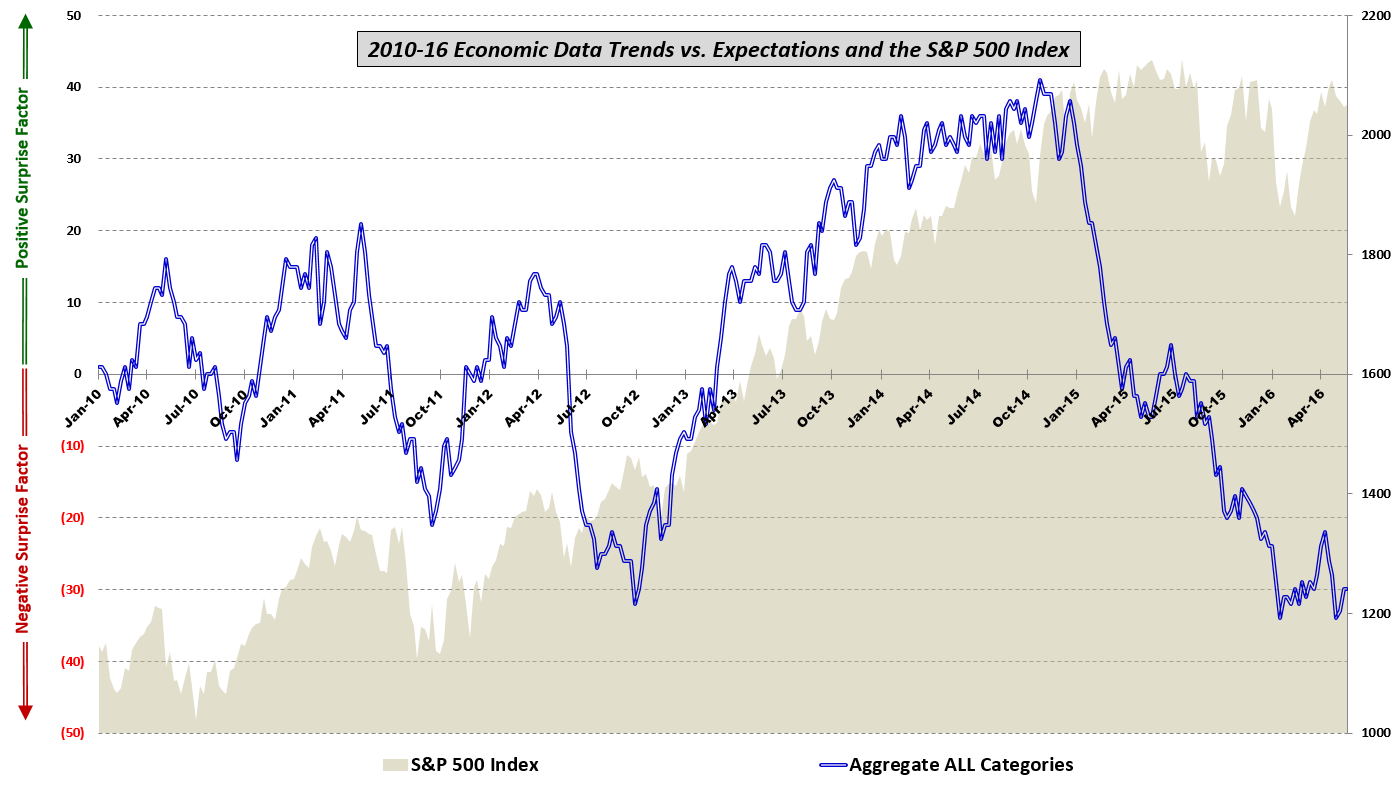Today we get another glimpse into the behind-the-scenes machinations of the “data dependent” Federal Open Market Committee (FOMC) with the release of the minutes from the April 26-27 meeting.
While the Fed has a dual mandate of maximum employment and price stability, lately there has been considerable discussion about the how much the Fed should let global considerations factor into Fed policy.Clearly, the pace of economic growth in China or the stability of euro zone has a significant downstream effect on economic activity in the United States.Additionally, with 48% of revenues from the S&P 500 companies coming from international markets, policy formulation in an increasingly interconnected global economy is becoming more complicated with each advance in technology, communications and logistics.
Given this backdrop, just how does the data look?For the past seven years I have been publishing an economic data surprise index that aggregates U.S. economic data relative to consensus expectations across areas such as employment, the consumer, housing/construction, manufacturing and inflation.The chart below aggregates data across all these areas and shows data peaking relative to expectations during October 2014.Since that peak, however, economic data relative to expectations deteriorated sharply, falling to an all-time low during the middle of January 2016 that was matched again at the end of last month.

[source(s):VIX and More]
If the Fed is indeed data dependent, then there is no avoiding the conclusion that aggregate data relative to expectations has been a disaster for the past 1 ½ months.There are some signs of stability forming in the current environment and clearly the strength of the dollar and the price of crude oil will have a great deal to say about economic data going forward.Then again, international events such as the Brexit vote and the evolution of negative interest rate policies of central banks across the globe may trump all domestic U.S. economic data.













Leave A Comment